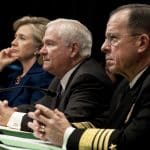Political communication and marketing, as well as government and organizational communication, and public administration, are among the interdisciplinary academic fields that have shown interest in government public relations (GPR) throughout its decades-long existence as a subfield of public relations research.
The confidence that people have in the institutions of their government is essential to a functioning democracy. People are more inclined to actively participate in democratic processes and abide by regulations and laws when they perceive government entities as open, accountable, and transparent.
By encouraging open lines of contact between the general public and governmental organizations, public relations (PR) is essential in building this vital trust. PR campaigns help to create and maintain public trust in government institutions by encouraging transparency, providing accurate information, and interacting with the public.
This article examines the value of public relations in government, emphasizing how it helps to foster openness and trust.
Transparency: Shining a Light on Government Actions
Promoting openness is one of the fundamental tenets of successful public relations in government. This entails providing the public with easy access to information on the actions, choices, and policies of the government. Proactive government public relations ensure the general public remains apprised of the reasons behind legislative choices and how those decisions will affect people’s lives.
Transparency can be achieved by governments in several ways. Websites that are updated frequently and that contain public records, press conferences, and town hall meetings are all important resources. Effective use of social media platforms additionally renders it possible to interact with the public directly and quickly. Governments may eliminate misconceptions and establish confidence by encouraging open communication.
Building Bridges: Effective Communication with Diverse Audiences
Government policies and initiatives often affect a wide range of stakeholders. Effective PR must create communications that appeal to a variety of audiences; this makes it necessary to comprehend the unique requirements and issues of every group. Everyone feels informed and has a say in the process when communication tactics are targeted, including community forums and outreach initiatives that consider cultural sensitivity.
Moreover, public relations specialists can be highly valuable in crisis communication. Governments can reduce public fear and gain support for their response efforts by disseminating information that is reliable, regular, and unambiguous. A sense of shared responsibility is fostered and the relationship between the government and the people is strengthened through open and honest communication.
Engaging the Public: Fostering Citizen Participation
Healthy democracies are nourished by engaged citizenry. Public relations techniques can be of the utmost significance in promoting public participation. Initiatives that support the registration of voters and civic education can help accomplish this. Social media platforms can be leveraged by governments to establish interactive forums where citizens may share their views and give input on proposed policies.
PR contributes to bridging the divide between the governed and the government by encouraging candid communication. People are more likely to feel committed to the success of the government when they perceive that their voices are acknowledged and heard. This improves democracy and promotes a sense of shared responsibility.
Countering Misinformation: Combating the Spread of Falsehoods
Effective communication is severely hampered by the emergence of social media and the dissemination of false information. False narratives and rumors can harm public trust in government institutions. PR specialists can combat this risk by actively discovering and debunking false information. In such a confrontation, distributing precise and easily available information is key.
Promoting media literacy among the populace also gives people the ability to assess the content they come across online critically. Government-initiated educational efforts, in conjunction with media channels, can provide citizens with the means to distinguish reality from falsehood.
Accountability: Measuring the Impact of PR Efforts
Successful PR goes beyond merely spreading knowledge; it also involves evaluating the results of communication approaches and making adjustments as needed. Surveys, focus groups, and social media analytics are tools that governments can use to determine how the public feels and where they can improve their communication. For example, polls in the U.S. have led to the conclusion that a third, or more, of the registered voters do not vote, which, in PR language, means there’s a need for stranger PR campaigns to motivate the people to use their rights to vote.
Governments can guarantee that their messages are understood by the public and help in the effort to foster trust and transparency by regularly assessing the success of their public relations campaigns.
Conclusion: Public Relations as a Pillar of Good Governance
Efficient public relations is an essential part of sound government and goes beyond just a vehicle for information dissemination. Government and citizen trust is substantially boosted by PR techniques that promote openness, involve the public, and dispel false information. A strong democracy depends on this trust, which also enables governments to properly represent their constituents.
Buy Me A Coffee
The Havok Journal seeks to serve as a voice of the Veteran and First Responder communities through a focus on current affairs and articles of interest to the public in general, and the veteran community in particular. We strive to offer timely, current, and informative content, with the occasional piece focused on entertainment. We are continually expanding and striving to improve the readers’ experience.
© 2024 The Havok Journal
The Havok Journal welcomes re-posting of our original content as long as it is done in compliance with our Terms of Use.










Leave a Reply